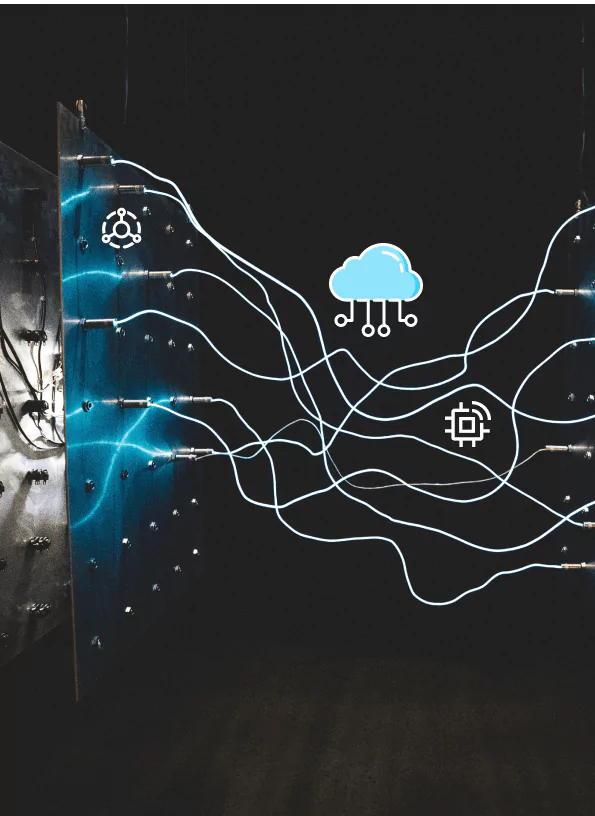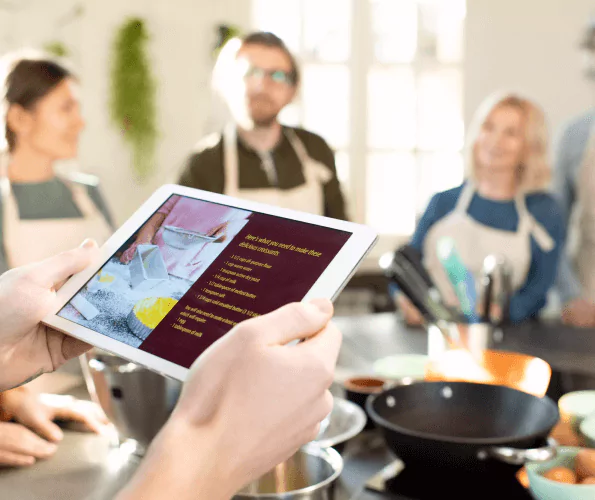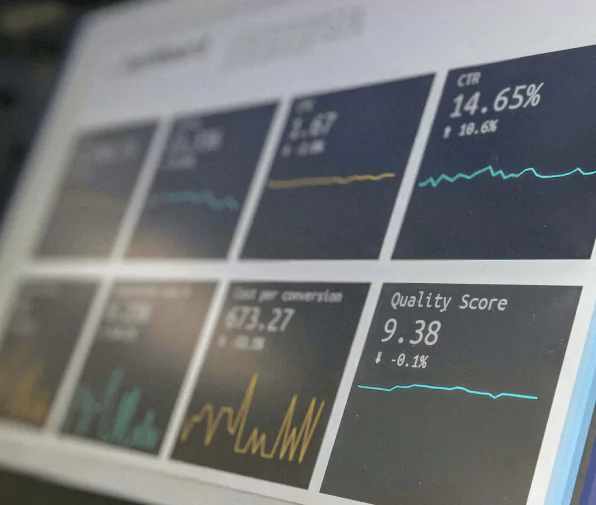Table of Contents
- Introduction
- Evolution of Smart Cities and Connectivity
- Telecommunications Infrastructure in Smart Cities
- The Intersection of 5G and Smart Cities
- Internet of Things (IoT) in Smart City Solutions
- Enhancing Urban Mobility through Telecom Technologies
- Smart Utilities and Energy Management
- Community Engagement and Inclusivity
- Telecom Industry Collaboration in Smart City Development
- Future Trends and Innovations in the Telecoms Industry
- Conclusion
- About Goodman Lantern
Introduction
In an era marked by rapid urbanisation and technological advancements, the concept of smart cities has emerged as a beacon of innovation and efficiency. Smart cities leverage cutting-edge technologies to enhance their inhabitants' quality of life, optimise resource use, and foster sustainable urban development. This whitepaper explores the integral role of telecommunications in smart cities, unravelling the dynamic interplay between connectivity and urban intelligence.
Smart city initiatives integrate and leverage the Internet of Things (IoT), data analytics, and automation to enhance efficiency, sustainability, and quality of life. From intelligent transportation systems and energy management to healthcare and public safety, the convergence of data-driven solutions propels cities towards heightened resilience and responsiveness. At the heart of this urban transformation lies the telecommunications infrastructure, acting as the nervous system connecting smart city components.
This whitepaper delves into the historical progression of telecommunications in smart cities, from the initial deployment of basic networks to the advent of 5G and beyond. By examining the evolution of telecommunications, we aim to unravel its pivotal role in shaping tomorrow's smart cities.
Evolution of Smart Cities and Connectivity

The evolution of smart cities and connectivity traces its roots to the 1970s when Los Angeles’s Community Analysis Bureau used computer databases and infrared aerial photography to make policy decisions and address poverty. The first smart city was arguably Amsterdam in 1994 when it created a virtual “digital city” to encourage internet usage.

There isn't a clear-cut designation for the world's first smart city as the concept has evolved gradually over time; however, one of the earliest examples often cited is the South Korean city of Songdo. Construction of Songdo International Business District began in the early 2000s and was designed from the ground up as a smart city. Songdo incorporates advanced technologies for sustainable urban living, efficient energy use, and integrated information systems. While not the absolute first, Songdo is an early and notable example of a city purposefully designed with smart and sustainable principles.

The Impact of Technological Advancements on Urban Landscapes
Technological advancements have profoundly reshaped urban landscapes, catalysing innovation in transportation, communication, and infrastructure. With the advent of 5G , this journey gained momentum, offering unprecedented speed and capacity for data transfer and supporting diverse applications. This transformative impact is evident in intelligent transportation systems, energy-efficient buildings, and interconnected urban services, fostering more resilient, connected, and adaptable cities for the future.

The Role of Connectivity in Shaping Smart City Infrastructure
Connectivity is the backbone of smart city infrastructure, interlinking diverse components for seamless communication. From IoT devices to data analytics platforms, robust connectivity facilitates real-time information exchange. This interconnected ecosystem enables efficient urban management, responsive services, and informed decision-making. The role of connectivity is pivotal in shaping smart city infrastructures that prioritise adaptability, sustainability, and enhanced quality of life for residents.
Telecommunications Infrastructure in
Smart Cities

Telecommunications infrastructure is the lifeline of telecommunications in smart cities, serving as the crucial framework for seamless connectivity and data exchange. From 4G to 5G to 6G, which is currently on track for deployment around 2030, these networks empower smart city applications, enabling real-time communication among sensors, devices, and urban systems. The efficiency of transportation systems, energy grids, and public services relies on the reliability and speed of telecommunications. As smart cities evolve, the role of telecommunications infrastructure will become increasingly integral in shaping urban landscapes for efficiency, sustainability, and innovation.

Fibre Optic Networks and 5G Technology
Fibre optic networks and 5G technology have shaped smart cities. Fibre optics provide the high-speed backbone for seamless data transmission, enhancing connectivity across urban infrastructures. Simultaneously, 5G facilitates wireless communication, enabling IoT and supporting real-time applications. Together, these technologies underpin the smart city evolution, fostering innovation, efficiency, and interconnected urban ecosystems for a sustainable and responsive future.
Integration of the Internet of Things (IoT)
Seamlessly integrating into city connectivity, IoT and its relevant devices are embedded in infrastructure and urban services, enabling real-time data collection and communication. From smart traffic management to environmental monitoring, this interconnected network enhances efficiency and responsiveness, contributing to the evolution of intelligent, connected cities that prioritise sustainability and the well-being of inhabitants.

The Intersection of 5G and
Smart Cities

As previously mentioned, the intersection and integration of 5G and smart cities heralds a transformative era, unlocking unparalleled potential in urban connectivity. 5G technology, with its high-speed, low-latency capabilities, amplifies the efficiency of smart city services by providing a robust foundation for IoT. From intelligent traffic management to real-time environmental monitoring, 5G applications promise enhanced responsiveness. The transformative impact extends to citizens, offering unprecedented levels of connectivity, accessibility, and efficiency that fundamentally redefine the urban living experience. However, the deployment in urban environments poses challenges, requiring careful consideration of infrastructure, security, and public acceptance for the seamless integration of this groundbreaking technology.
Applications of 5G in Smart City Services
There are a number of ways that 5G can be applied in smart cities:
- Intelligent traffic management leverages real-time data for dynamic routing, reducing congestion.
- Enhanced public safety utilises 5G-enabled surveillance and response systems for rapid incident detection.
- Smart grids leverage the connectivity for efficient energy distribution and consumption.
- Healthcare benefits from remote patient monitoring and telemedicine.
- Augmented reality experiences in tourism and education thrive on high-speed, low-latency connections.

Challenges and Considerations in Deploying 5G in Urban Environments
Deploying 5G in urban environments comes with challenges and considerations. The dense infrastructure required for 5G networks demands careful urban planning to address space constraints and visual impacts. Additionally, ensuring widespread coverage while maintaining signal strength in high-rise areas poses technical challenges. Concerns about the potential health effects of increased radiofrequency radiation and the need for robust cybersecurity measures add complexity, requiring a comprehensive approach to navigate the intricacies of 5G deployment in urban landscapes.
Internet of Things (IoT) in Smart City Solutions
By seamlessly connecting devices and sensors, IoT transforms cities into intelligent ecosystems. This dynamic integration of technology fosters innovation, efficiency, and sustainable urban development, reshaping how cities function and serve their inhabitants.

Role of IoT Devices in Urban Planning and Management
IoT devices play a pivotal role in urban planning and management. Sensors and devices gather real-time data on traffic flow, environmental conditions, and infrastructure usage. This wealth of information empowers city officials to make informed decisions, optimise resource allocation, and enhance overall urban efficiency. The integration of IoT devices contributes to smarter, more responsive urban planning, ensuring cities are adaptive and sustainable for the future.
Smart Sensors for Smart City Infrastructure
Smart sensors are the linchpin of smart city infrastructure, embedding intelligence into urban environments. These sensors, often leveraging IoT technology, monitor and collect data on traffic, air quality, energy usage, and more. Their real-time information enables cities to make data-driven decisions, optimise resource allocation, and enhance overall efficiency.


IoT Applications in Transportation, Energy, and Public Services
Below are a few examples of IoT applications that demonstrate how IoT integration enhances urban connectivity, making cities more efficient, sustainable, and responsive to the needs of their residents.
- Smart traffic management: IoT sensors on roads and in vehicles monitor traffic flow in real-time, optimising traffic signal timings and rerouting to alleviate congestion. (For example,
- Waste management: IoT-enabled waste bins with sensors alert collection services when they are full, optimising collection routes for efficiency and reducing unnecessary pickups.
- Environmental monitoring: IoT devices measure air and water quality, helping city officials identify pollution sources and implement responsive measures to improve environmental conditions.
- Smart lighting: Streetlights equipped with IoT sensors adjust brightness based on real-time conditions, saving energy and enhancing safety.
- Public safety: IoT-connected surveillance cameras and sensors aid in crime detection and emergency response, contributing to overall public safety.
Successful IoT Integration in Smart Cities
A few examples of successful IoT integration in smart cities include:
- Singapore’s intelligent traffic management system utilises real-time traffic monitoring to optimise congestion and enhance road efficiency.
- Barcelona employs IoT for waste management, with smart bins signalling when they're full, optimising collection routes.
- Songdo, South Korea uses sensors for energy management, water conservation, and air quality monitoring, creating a model for sustainable urban living.
- Copenhagen, Denmark utilises IoT for its many smart city initiatives, such as smart street lighting that adjusts based on real-time data, optimising energy usage.
- Dubai, UAE has been known for its ambitious smart city projects, including surveillance and public safety. The city has implemented a smart surveillance system for public safety.

Enhancing Urban Mobility through
Telecom Technologies
As touched on in the examples above, telecom technologies play a pivotal role in revolutionising urban mobility. From real-time traffic monitoring to intelligent transportation systems, connectivity facilitates seamless data exchange. This enables dynamic routing, optimised public transit, and smart traffic management. Overall, this enhances efficiency and reduces congestion for a more fluid and sustainable urban transportation experience.

Intelligent Transportation Systems
Intelligent transportation systems (ITS) leverage advanced technologies to enhance the efficiency and safety of transportation networks. Through the integration of sensors, communication networks, and data analytics, ITS provides real-time traffic information, enables smart traffic signal control, and supports automated vehicle systems. This interconnected approach optimises transportation management, reducing congestion, improving safety, and contributing to the evolution of smart and responsive urban mobility.
Connected and Autonomous Vehicles
Connected and autonomous vehicles (CAVs) are vehicles equipped with communication and sensing technologies, capable of interacting with each other and the environment. These vehicles enhance safety, reduce traffic congestion, and improve efficiency by leveraging real-time data. CAVs contribute to a future of intelligent transportation, where automation and connectivity revolutionise the driving experience, making roads safer and transportation more sustainable.

Smart Utilities and Energy Management

Smart utilities integrate advanced technologies to optimise resource usage. Through IoT sensors and data analytics, these systems monitor and control energy distribution, water supply, and waste management in real time. This intelligent approach enhances efficiency, reduces environmental impact, and contributes to sustainable urban development.

Smart Grids and Efficient Energy Distribution
Smart grids revolutionise energy distribution by leveraging IoT and other advanced technologies. Through IoT sensors and communication networks, these grids monitor electricity usage, identify faults, and optimise energy flow in real time. The integration of renewable energy sources and demand-response mechanisms enhances efficiency, reduces losses, and contributes to a more resilient and sustainable energy infrastructure, shaping the future of efficient and intelligent power distribution.
Water and Waste Management Through Connectivity
Connectivity transforms water and waste management through intelligent solutions. IoT sensors monitor water usage, quality, and waste levels in real-time. This data is transmitted via connected networks, enabling efficient resource allocation, leak detection, and optimised waste collection routes. The integration of connectivity enhances sustainability, reduces environmental impact, and promotes more effective urban water and waste management.


Successful Examples of Telecom-Enabled Smart Utilities
Telecom-enabled smart utilities showcase success globally. In Barcelona, Spain, smart water management employs IoT to optimise irrigation and conserve resources. Singapore's smart grid integrates telecom tech for efficient energy distribution. In California, the Irvine Ranch Water District employs sensors and telecom networks for real-time monitoring, reducing water wastage. These examples illustrate how telecom-enabled solutions enhance utility services, making them more efficient, sustainable, and responsive.
Community Engagement and
Inclusivity

Community engagement and inclusivity are vital in shaping successful initiatives for telecommunication in smart cities. Involving residents fosters understanding, addresses concerns, and ensures diverse perspectives are considered. This inclusive approach builds trust, encourages adoption, and helps tailor telecom solutions to meet the specific needs of communities. This approach ensures a more connected, responsive, and equitable urban environment.

Ensuring Equitable Access to Telecom Services
Ensuring equitable access to telecom services is imperative for inclusive smart city development. Bridging the digital divide requires targeted efforts to provide affordable, reliable, and high-speed connectivity to underserved communities. By addressing socio-economic disparities and prioritising universal access, smart cities can empower all residents with the opportunities, information, and connectivity needed for full participation in the digital age.

Community Engagement in Smart City Planning
Community involvement in smart city planning is essential. Conducting town hall meetings, surveys, and workshops encourages residents to voice concerns and share ideas. Online platforms and social media enable broader participation. Utilising interactive tools, such as virtual reality simulations, helps visualise proposed changes. By fostering open communication and collaboration, city planners ensure that smart initiatives align with the needs and aspirations of the diverse community, promoting inclusivity and ownership in urban development.

Bridging the Digital Divide in Urban Environments
Bridging the digital divide in urban environments requires multifaceted strategies. Implementing affordable broadband initiatives, providing public Wi-Fi, and subsidising access for low-income communities enhance connectivity. Offering digital literacy programmes empowers residents to utilise technology effectively. Community engagement ensures inclusive planning, addressing specific needs. Public-private partnerships and government incentives further support equitable access, fostering a more connected and accessible urban landscape.
Telecom Industry Collaboration in
Smart City Development

Telecom industry collaboration is a key factor in smart city development. By fostering partnerships, sharing expertise, and aligning standards, the industry can create integrated solutions that enhance connectivity, infrastructure, and services, ensuring a cohesive and effective approach to building intelligent and responsive urban environments.

Public-Private Partnerships for Smart City Initiatives
Public-private partnerships (PPPs) in smart city initiatives involve collaborations between government entities and private companies. Examples include companies providing technology solutions for urban infrastructure or managing services like transportation. These partnerships leverage private sector expertise and resources while aligning with public sector goals, enhancing the implementation and sustainability of smart city projects to benefit both stakeholders and the community.

Collaborative Efforts Among Telecom Providers
As well as PPPs, collaborative efforts among telecom providers are essential for delivering comprehensive solutions for telecommunications in smart cities. By sharing infrastructure, standards, and expertise, providers enhance connectivity, reduce redundancy, and optimise resource usage. This collaborative approach ensures a cohesive and efficient telecom network, enabling seamless communication and supporting the diverse technological requirements of a smart city ecosystem.

Initiatives and Alliances Driving Smart City Evolution
A few initiatives and alliances driving the evolution of smart cities include the Smart Cities Mission in India, the European Innovation Partnership for Smart Cities and Communities (EIP-SCC), and the Global Smart City Alliance. Organisations like the Smart Cities Council and the Open and Agile Smart Cities (OASC) initiative also foster collaboration. These initiatives aim to accelerate urban innovation, sustainability, and technology adoption on a global scale.
Future Trends and Innovations in
the Telecoms Industry

The trends influencing the telecommunications industry, such as the continued uptake of 5G, AI and machine learning, and cloud computing, will continue to shape the future of telecoms in smart cities.

Predictions for the Future of Telecommunications in Smart Cities
The future of telecommunications in smart cities anticipates transformative trends. Predictions include the widespread deployment of 5G networks (and later 6G networks), enabling faster and more reliable connectivity. Edge computing integration will enhance real-time data processing. Telecoms will play a pivotal role in supporting the exponential growth of IoT devices, facilitating comprehensive smart city solutions. Additionally, increased emphasis on cybersecurity and data privacy is foreseen to safeguard the integrity of urban connectivity.
Emerging Technologies and Their Impact
Emerging technologies shaping telecommunications in smart cities include 5G for enhanced connectivity, AI for data analytics and decision-making, IoT for real-time monitoring, and edge computing for decentralised processing. Autonomous vehicles, solar energy storage, and multi-functional robots will transform everyday tasks. Blockchain will ensure secure transactions, while drones will aid in surveillance and data collection. Augmented reality (AR) and virtual reality (VR) are also set to redefine urban experiences. The collective impact of these technologies aims to transform smart cities into adaptive, intelligent, and sustainable urban environments.


Global Trends Influencing Smart City Development
Global trends influencing smart city development encompass increased urbanisation, smart health communities, intelligent mobility, and sustainable infrastructure. Climate change concerns are also driving eco-friendly initiatives, and the recent pandemic has prioritised resilient and adaptable urban planning. These trends converge to shape smart cities that prioritise efficiency, connectivity, and the well-being of their inhabitants globally.
Conclusion

In conclusion, the evolution of smart cities stands at the intersection of technological innovation, urban planning, and community engagement. From the transformative potential of 5G and IoT to the integration of advanced telecom technologies, smart cities are redefining urban landscapes.
Initiatives and alliances, both public and private, drive collaborative efforts towards sustainable and efficient urban development. As global trends emphasise resilience, inclusivity, and environmental consciousness, smart city evolution becomes a collective endeavour.

The seamless integration of emerging technologies not only enhances connectivity but also fosters adaptability and responsiveness. As we look to the future, the trajectory of smart city development promises more intelligent, connected, and sustainable urban environments, where the well-being of citizens is prioritised through innovative, collaborative, and forward-thinking initiatives.
About Goodman Lantern

Goodman Lantern is a content marketing agency specialising in data-driven research and content creation. Whether you are in the public or private sector, we can provide valuable insights for your smart city initiatives. Leveraging our expertise, we can deliver comprehensive reports and analyses that aid in informed decision-making, enabling your business to navigate the complexities of technology integration, urban planning, and sustainable development for successful smart city implementations.
Our Clients Love Working With Us Because We Believe in Collaboration
At Goodman Lantern we’re all about building long-term, successful relationships with our clients. We take the time to get to know their business AND the people behind the brand. In true collaborative spirit, we do everything we can to tell your story and help your business grow.
“Goodman Lantern has an unparalleled level of skill and talent, coupled with a keen understanding of implementation.”
“Whenever we've provided feedback or suggestions they have always been receptive and open to making changes.”
“In marketing, content generation is one of the biggest challenges. I’ve been using a large freelancing network, and I did have trouble finding the right talent to produce content for us. Then I got to know Goodman Lantern. We started to do business together, and it seemed Raj understood my requirements very well. He delivered quality content that met my expectations.”
Hundreds of Businesses













